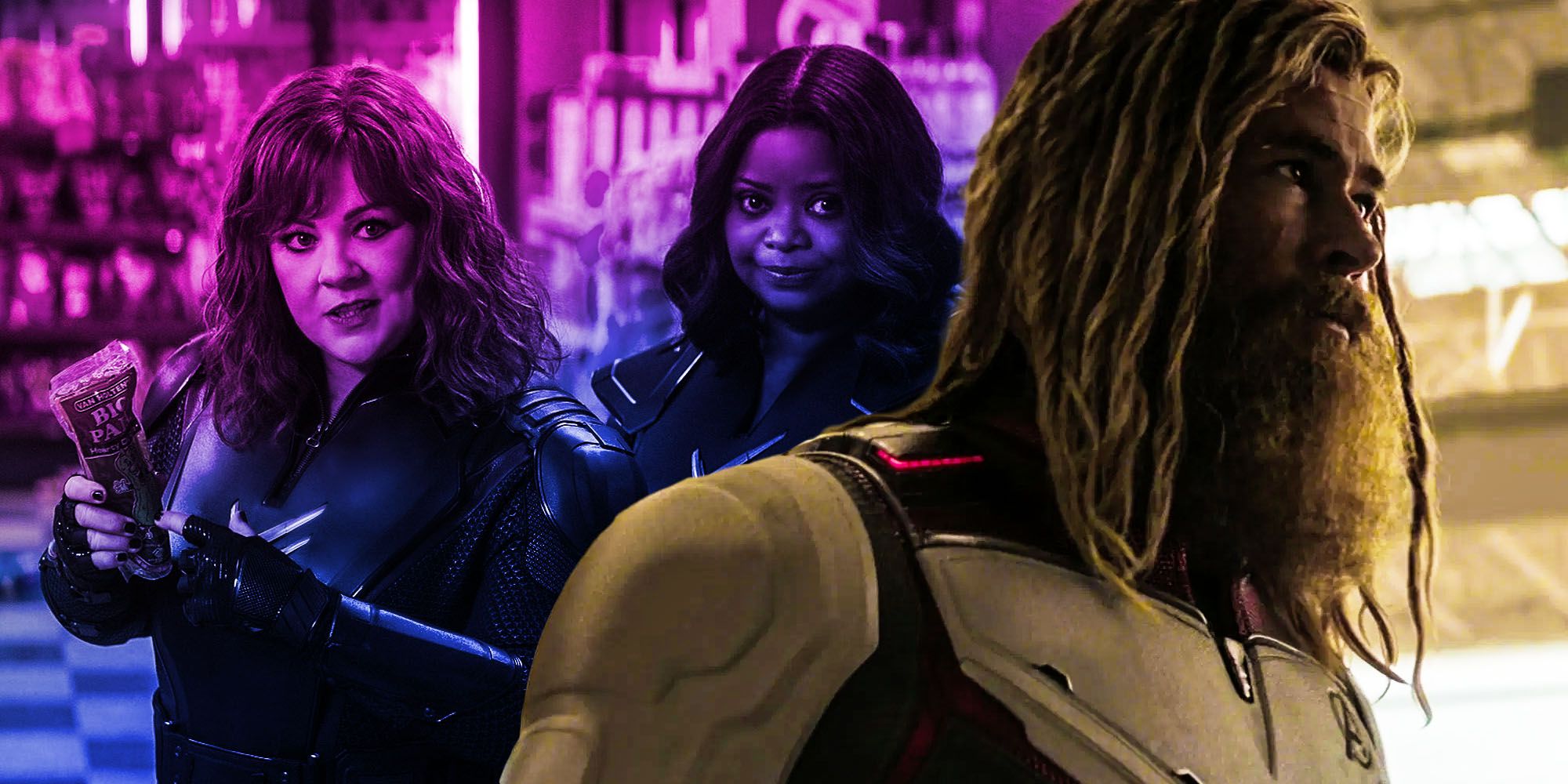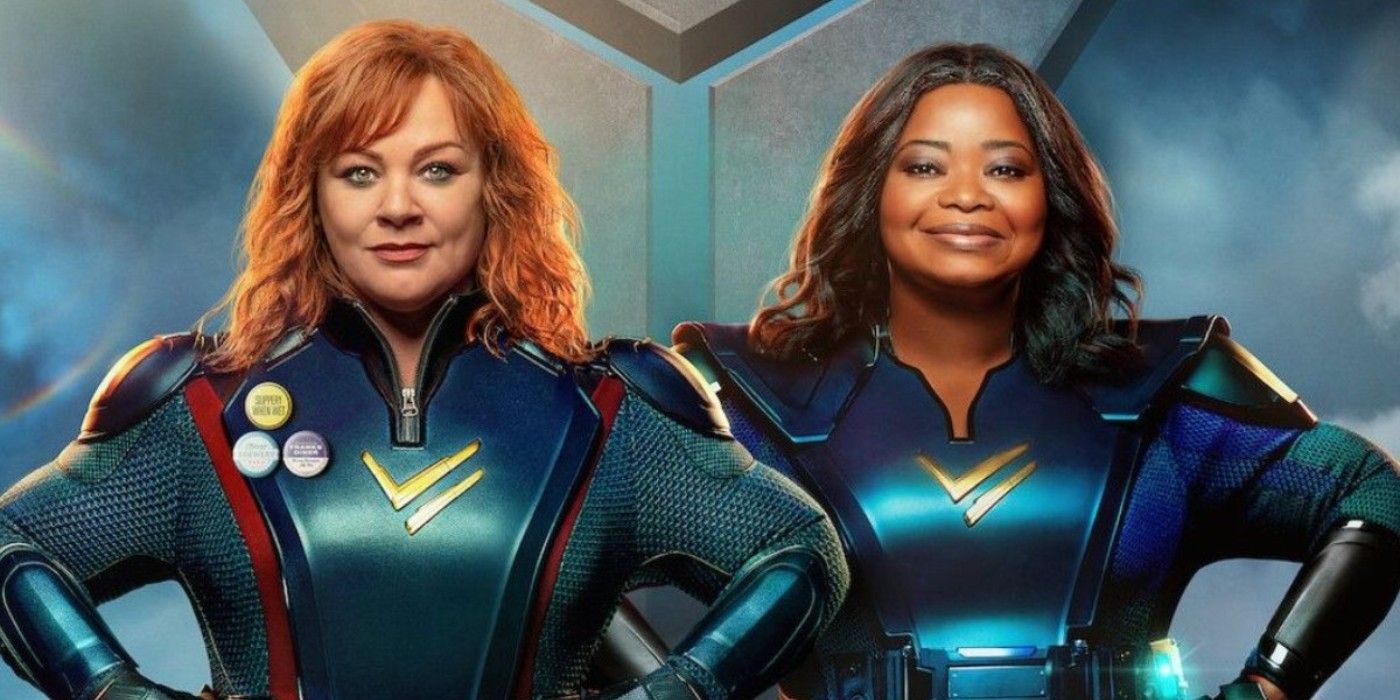Netflix’s new superhero movie, Thunder Force, spreads a body positive message about superheroes and highlights how big of a mistake Marvel’s Fat Thor actually was. Thunder Force, written and directed by Ben Falcone, features two very ordinary middle-aged women, Lydia (Melissa McCarthy) and Emily (Octavia Spencer), getting superpowers from serums designed by Emily, who is a renowned geneticist. They are estranged childhood friends who are forced to work together after Lydia has accidentally taken one half of the treatment developed by Emily, for super strength. Emily then takes the other half of the treatment, which gives her the power of invisibility, and they team up to become a superhero team named Thunder Force.
Thunder Force has a very body-positive message, by showcasing two superheroes who have very different body types than the usual superheroes from the MCU or the DCEU. Lydia and Emily are plus size, and this doesn’t factor much into the story or the characters’ abilities, which is why it’s so positive: since there’s no necessity for a super-powered individual to look very fit or otherwise aesthetically pleasing in order to have incredible powers, Thunder Force highlights what real heroes are.
That message is a stark contrast to how Marvel treated Thor in Avengers: Endgame, and the comparison was made even before Netflix’s superhero movie came out; from the trailers, critics were able to tell that the movie was going to criticize Endgame’s Fat Thor mistake. Thunder Force avoids making jokes at the expense of fat people, and incidentally the movie’s characters. In comparison, Marvel’s treatment involves making fun of Thor's weight gain - a fact that's doubly insensitive given it's clear this is a result of how much he's struggling mentally at this time. Thunder Force shows that one’s body type doesn’t change their potential to be a hero, which is an important moral message that Endgame completely misses making.
Ben Falcone's film does make some jokes about its characters’ weight, but they are pulled from the experiences of real people: the scene where the main duo try to get out of their very low sports car is a great example of that. However, the movie mainly pokes fun at superhero tropes, and jokes about the characters’ bodies are far from being the main subject. A refreshing example is the training sequence, where instead of being focused on how their bodies look, the characters are focusing on what their bodies can do. As their powers are getting stronger, they’re learning to harness them without trying to change their body type to look more like what one expects a hero to look like. Even if the movie eventually falls back into conventional territory, it does try to change the narrative around super-powered bodies.
Marvel hasn’t committed to including different body types in its line-up of superheroes, and the inclusion of Fat Thor just made matters worse. Instead of having the Avengers being worried for their colleague who is clearly going through some mental health issues, they make fun of the god of thunder’s physique and take him less seriously than when he was fit, making Thor an exception rather than a welcome change in representation. The MCU could still rectify their mistake by keeping Fat Thor in Thor: Love and Thunder and explore the character’s depression and PTSD in more detail. After all, having superpowers shouldn’t be tied to one’s physique, especially when those powers are acquired supernaturally through serums, radioactivity or simply being an alien, and Thunder Force makes that point stunningly.


